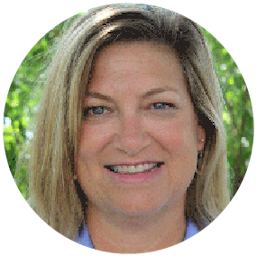Putting Inclusion into Practice
Jan 24, 2019
First story
With the release of the new Humanitarian Inclusion Standards for Older People and People with Disabilities, I’m hopeful that inclusion can go from a niche issue to mainstream humanitarian priority. Inclusion is core to HelpAge’s mission as an organization and a practice we have long advocated for.
In 2014, HelpAge International collaborated with Humanity & Inclusion (the new name of Handicap International) on Hidden Victims, a report that looked specifically at Syrian refugees living with an impairment, injury, or chronic disease. What we found was that many more refugees than previously thought were struggling with unmet needs. In Jordan and Lebanon, 22 per cent of surveyed Syrian refugees were living with a disability. Among people 60 and over, the figure rose to an astounding 70 per cent. By contrast, only 1.4 per cent of UNHCR-registered refugees in Lebanon were identified at the time as having a disability. While not an apples-to-apples comparison, the fact remains that older people and people with disabilities often go unidentified in humanitarian crises. Today, not much has changed.
Our current data systems are still, by design, exclusive. Many official modes of data collection do not disaggregate data by sex, age and disability. Certain demographic and health surveys, for instance, still do not collect data on people over the age of 49 and when they do it may not be disaggregated by age.
Lumping people into homogenous data categories, doesn’t seem like the worst injustice until we consider how it sets humanitarian programs and policies up for failure. Not accounting for older age and disability in data collection means resulting programs and policies will be poorly designed to meet the needs of at-risk populations.
What this translates to in practice are distribution centers reachable only by those who can walk there; food only for those capable of digesting it; and emergency warnings understood only by those who can see and hear.
In a Women’s Refugee Commission report, Chris Stubbs of the Mentally Handicapped Children and Families Education Project, does not mince words when explaining what exclusion looks like.
“In all wars and disasters, it is persons [with disabilities] that are first to die; the first to get disease and infection; and the last to get resources and medicines when they are handed out.”
Many of the same people Stubbs refers to as the last to receive help are also older. Globally, the prevalence of disability increases with age. 38 per cent of all people aged 60 and above are living with a disability compared to just 9 per cent of people who are 18–49 years of age.
Conversely, when humanitarian practitioners make inclusion a priority, real progress happens in the form of lives saved and effective disaster preparedness. When a response team from the Kenya Red Cross Society mapped out at-risk households in Kisumu County, an area prone to flooding, they were able to locate the most vulnerable individuals — older people, people with disabilities, and pregnant women — and evacuate them using a power canoe, preventing them from being stranded.
And when Concern Worldwide, in a joint effort with the U.S. Office of Foreign Disaster Assistance (OFDA), undertook data collection in rural Pakistan that was disaggregated by sex, age, and disability, they were able to pinpoint breakdowns in accessing basic services. Insights from the data led to the installation of accessible hand pumps, providing clean water to many who could not access it before.
From the work of these humanitarian organizations and others like them, we know that when inclusion becomes a priority, change is possible. One of the first steps is collaboration. The Humanitarian Inclusion Standards for Older People and People with Disabilities represents the work of over 139 organizations across 26 countries, many of which are led and represented by older people and people with disabilities themselves. Strengthening inclusion is more than just the message behind the standards, it’s core to the project’s very development.
As we near the 7th anniversary of the Syrian war, I think not only of the many Syrian refugees who are struggling with unmet needs but of all the refugees caught in the world’s protracted humanitarian crises — those from South Sudan, Burundi, and Ukraine, to name just a few. While, as humanitarian practitioners, we can’t control the complex political and economic factors that contribute to these disasters, we can change how we reach those who are impacted. Let’s make sure that no one is left behind in humanitarian action; let’s put inclusion into practice.
About the Humanitarian Inclusion Standards for Older People and People with Disabilities
Developed by the Age and Disability Capacity Program, a consortium of 7 humanitarian agencies (including HelpAge International), and funded by the Office of Foreign Disaster Assistance (USAID), the Humanitarian Inclusion Standards for Older People and People with Disabilities are an essential tool for strengthening accountability and engagement in humanitarian response. They provide key guidance, tools, and case studies illustrating how to include older people and people with disabilities in humanitarian responses. To learn more, visit www.helpageusa.org




